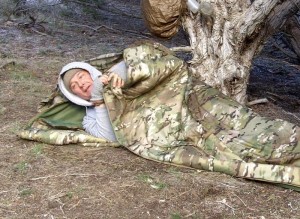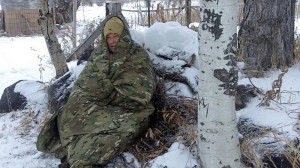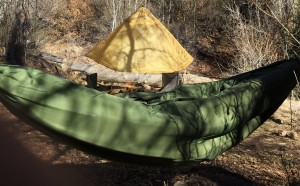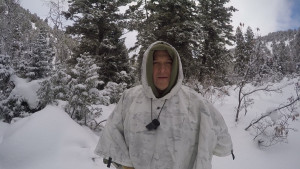We are often asked questions about our “PSB” or Personal Survival Blanket series. Here are 5 commonly asked questions about our Personal Survival Blanket.
Yes we do ship to Australia, and most other countries in the world. We have found success in using USPS Priority Mail International, it saves our customers on shipping costs, and has been very reliable. All blankets are custom made to the size and cover fabric of your choice, production time generally runs about two weeks.
What size Personal Survival Blanket would you recommend I get?
We currently offer three sizes, and what size you order is really according to your preference, however there are some suggestions I can give to steer you in the right direction. Originally (2010) I was trying to make the smallest blanket that would work for me (5′ 10″) and started off with a 6′ x 6′, which worked quite well, and I still use it regularly in weather that is not too cold. I did find that as the temperatures cooled below the 30’s that the blanket was too small for me to comfortably get all the way into, resulting in cold areas. When we made the Personal Survival Blankets available for sale, we made the smallest or standard size 6′ x 7′, allowing a person in my size range able to get “all in,” enabling comfort at colder temperatures. The blankets and the cover fabric are very breathable, easily passing body moisture to the outside and making “all in” sleeping possible, resulting very much increased comfort in cold weather. The next size up is 6′ x 8′ for taller persons still desiring “all in” sleeping. The third size and the most popular is 7′ x 8′ for persons larger in girth, or to accommodate an additional blanket or two for below zero sleeping. A note on sizing is warranted here, our sizing is generalized for convenience in labeling and conversation, the actual finished size will generally run about 2″ smaller in each direction. We try to optimize standard materials sizing in our manufacture for less waste and efficiency.
What is the temperature range of the Personal Survival Blanket if I use it clothed?
The temperature range of the blanket can vary some depending on your conditioning to cold, i.e. we tolerate more cold by spring than we do in the fall when we have not yet acclimated to the cold. If a person is going to bed clothed it is best that the clothing be relatively dry and I recommend it be synthetic like polyester or poly/cotton i.e. 60/40 or better. With poly clothing I have gone to bed quite damp and been dry by morning. If wearing cotton I advise taking off clothing as it will be warmer without it. Make sure clothing worn is not too constricting either, as blood flow can be impaired, additionally comfort is often reduced. The environmental conditions, like wind, can make a difference, and the surface you are laying on, whether it is warm or cold. I find for myself typically I can be comfortable in the 40’s (4 C) for sure, in the 30’s (1 C) most of the time and 20’s (-6 C) or lower with proper preparations. As an example I did sleep with that original survival blanket (6′ x 6′) in late January one year in a storm that dropped temperatures to -4 F (-20 C), my sleep was rather fitful and not comfortable. I slept 15 to 20 minutes at a time. The positive thing is, I did not go hypothermic, and though I was uncomfortable I did not get dangerously cold.

A person’s cold conditioning has more to do with temperature range than any other factor really. In the late fall a person is much more sensitive to cold than in late winter, in fact 30 degrees more tolerance is not unusual. Additionally, the amount of time a person spends outside in the elements has a great bearing on the comfort range as well, we acclimate to the cold better if we are exposed to it more.
Let me address two items mentioned above since we can control those. Wind. A good wind can penetrate the blanket since it is breathable, a small breeze is normally not a problem. Anything you can do to stop the wind is helpful. An example is to use a poncho or tarp as a wind block, it can just lay on top after securing down the side into the wind, ideally if you can it’s best to raise the poncho/tarp a little above your blanket on the open edge so the blanket can breathe well, thus getting rid of your body moisture. I have done snow camps where I laid the poncho right on the blanket, but I do retain a bit more moisture that way, not serious especially if the temperature is below freezing as the frost inside will stick to the poncho and you can just shake it off in the morning. Sheltering from the wind also helps to create a micro climate which results in being comfortable at a lower temperature. Ground Surface. Heat loss to the ground is the most common cause of a blanket, or sleeping bag for that matter, not being comfortable in cool weather. I find that by preparing the ground under me properly I am able to get the best temperature range out of a blanket. I can easily sleep in the 20’s (-6 C) if I’m insulated from cold ground and if windy, blocked from the wind. Ideally a person is looking to have some insulating material underneath such that when you are laying on it, it does not compress more than will allow a hand width of thickness, 4″ (10 cm). When out in the bush I like to use pine or juniper boughs, I lay them down to about 12″ thickness (30 cm). They are soft and comfortable and will warm by your body heat and will then do a great job of keeping you warm on the underside. Anything you have like this will help, grass, small leafy branches of trees or brush, etc.
Use in a hammock – the PSB series is fine as a blanket in mild cold inside the hammock, it will still compress when laying on it in a hammock, so as it gets colder that method of use is less effective. My preference is to use the Personal Survival Blanket as a wrap around the hammock, essentially making a cocoon. This works well since there is no compression of it, being that it is on the outside, and it helps to create a micro climate inside. I like to clip one edge of the blanket to the front edge of a hammock with EZ Clip Midi’s, then wrap the blanket under, up the back, over the top, and finally draped down the front of the hammock. Secure the ends with the included shock cord loops. Check video playlist reference at the bottom for videos demonstrating this method.
When sleeping on the ground do I need to use a mattress or can I use it directly on the ground?
The Personal Survival Blanket can be used directly on the ground, which I do frequently, or you can use a Thermarest or a natural mattress of boughs, depending on your needs, conditions, and availability of materials. You can even use it on damp, not wet, ground without a ground cloth or tarp.
Additional Information –
Video help on the Personal Survival Blanket series
For more help and ideas on the PSB series here’s a link to our blanket Playlist https://www.youtube.
Here’s a video on a winter snow camp with just the blanket (PSBL) on a bed of boughs, clothing on, and a poncho cover for blocking the wind. Temperatures in the low 20’s (-6 C) https://youtu.be/
I think I’ll do a video on this blog to demonstrate some of the concepts, check back to this blog as I’ll place a link here for easy access to the video.
Until next time, this is Perry Peacock, “Simplifying Survival”







can you wash the blanket in a washing machine.